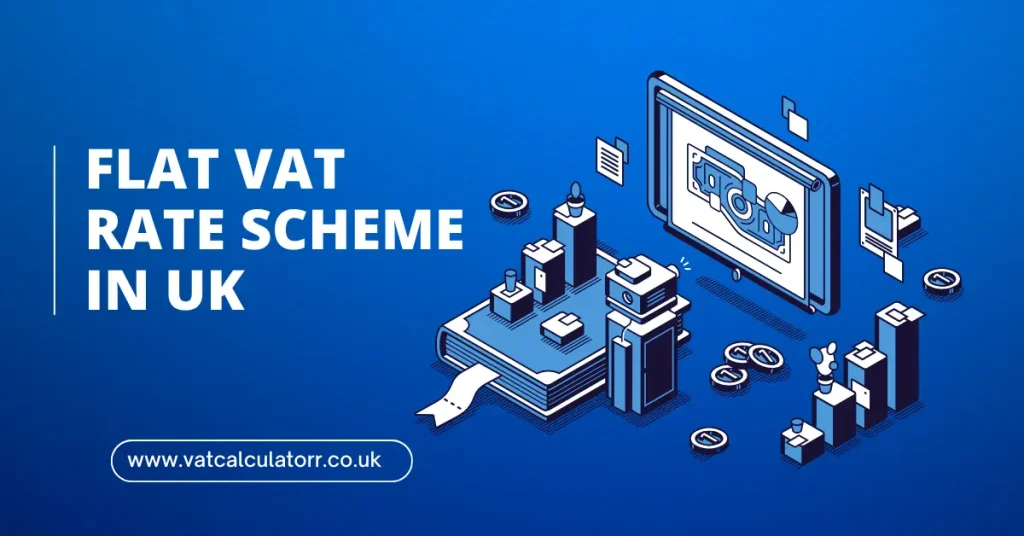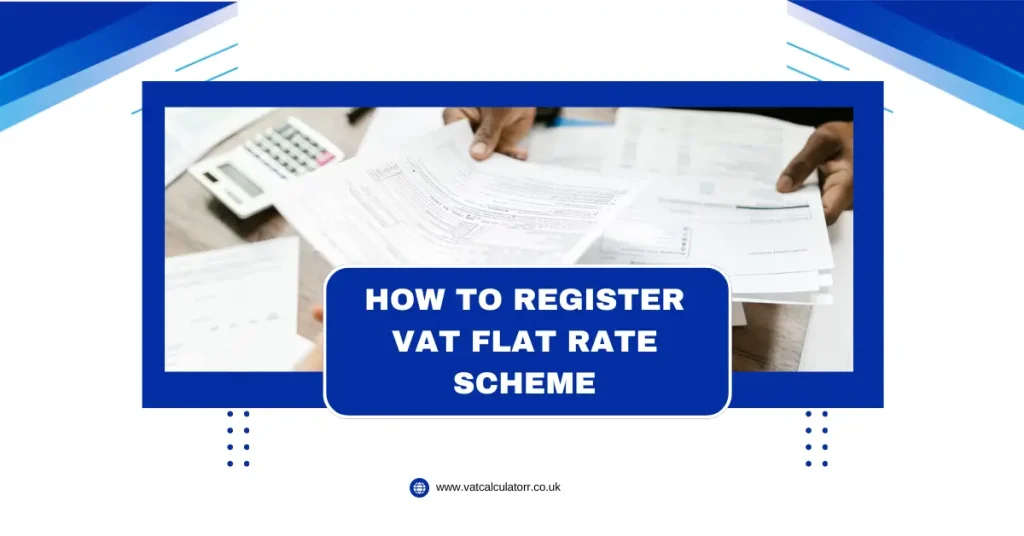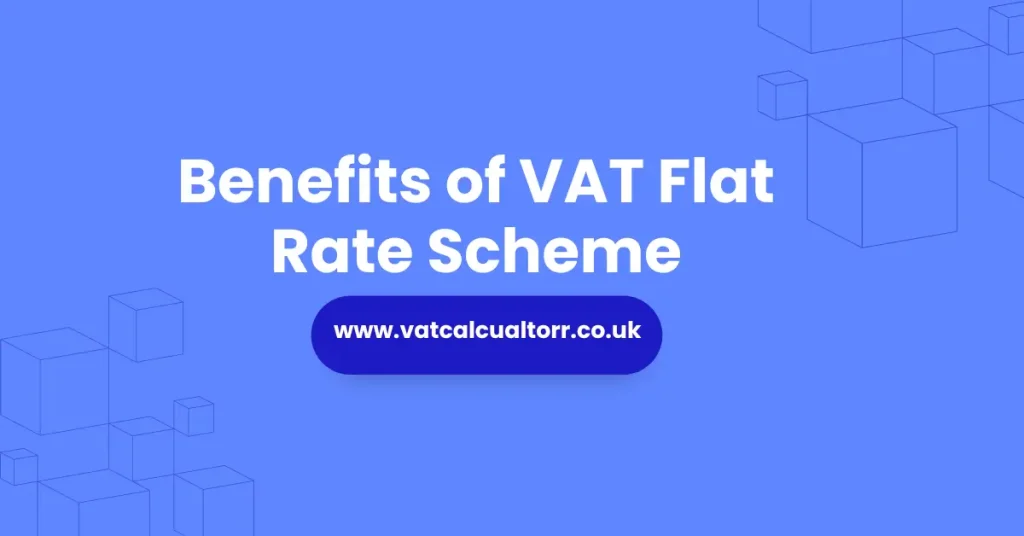What Is VAT Flat Rate Scheme In UK?
The VAT Flat Rate Scheme in the UK is a simplified VAT accounting method where small businesses pay a fixed percentage of their VAT-inclusive turnover instead of calculating VAT on each sale and purchase. Under the VAT Flat Rate Scheme, businesses cannot reclaim VAT on most purchases but benefit from easier record-keeping and predictable VAT payments.

What is a VAT Flat Rate Scheme?
The VAT Flat Rate Scheme is a VAT accounting method created by HMRC for small businesses. Under the scheme, VAT is paid at a fixed rate on gross turnover rather than on each sale and purchase.
- Fixed rates range from 4% to 16.5%
- The rate used depends on the business type
- The flat rate is applied to VAT-inclusive turnover
- Input VAT on purchases cannot be claimed under this scheme
The scheme is available to UK businesses below the threshold and is separate from the standard VAT method.
How Does the VAT Flat Rate Scheme Work?
Under FRS, VAT is calculated by multiplying gross turnover by a flat rate percentage. The result is submitted as the VAT due for that period.
Example:
- Turnover: £100,000 (VAT inclusive)
- Flat rate: 12%
- VAT due: £100,000 × 0.12 = £12,000
This system removes the need to track VAT on every invoice or expense.
What Are the Requirements for the VAT Flat Rate Scheme?
Eligibility requires a VAT turnover of £150,000 or less, excluding VAT.
Ineligible if:
- A VAT-related offence occurred within 12 months
- Business joined or was eligible for a VAT group in the last 24 months
- Business registered as a division in the last 24 months
- Closely associated with another business
- Currently using margin or capital goods schemes
- Left FRS within the last 12 months
- Using Cash Accounting Scheme (not compatible)
This scheme is best suited for sole traders and small limited companies with low VAT reclaim needs.
How to Apply for the VAT Flat Rate Scheme?
Application requires checking eligibility and submitting VAT600 FRS online or by post.

To apply:
- Prepare business registration number and UTR
- Gather bank and turnover details
- Submit form via HMRC’s digital services or by mail
Application details must match those used for VAT registration. HMRC assigns a start date after approval.
Leaving the VAT Flat Rate Scheme
You can leave the FRS by notifying HMRC through your online VAT account. Standard VAT accounting resumes at the start of the next VAT return period.
HMRC must receive notice before the period starts. Exit timing depends on eligibility changes or business needs.

Advantages of the VAT Flat Rate Scheme
The FRS provides accounting simplicity and may improve financial predictability.
- Reduces VAT record-keeping requirements
- Offers a fixed rate, simplifying forecasting
- May lower VAT liability for businesses with limited input costs
The FRS works best for service-based firms with minimal input tax.
Conclusion
The VAT Flat Rate Scheme supports efficient VAT accounting for eligible small businesses. Businesses must track turnover, maintain eligibility, and apply flat rates correctly.
Evaluation of the scheme’s financial benefits should occur regularly. Internal changes affecting eligibility must be updated through your VAT account.
Entity details are listed on About Us. Related methods are explained in the UK VAT Calculator.
No. The scheme does not allow VAT claims on purchases.
Yes. Turnover includes VAT.
Submit VAT600 FRS form online or by post to HMRC.
Yes. Switching is allowed if all conditions are met.
Notify HMRC through your VAT account.
Yes. The flat rate applies to VAT-inclusive sales.
Decision depends on your business turnover and input costs.
The scheme has no fee. You pay a fixed percentage of VAT-inclusive turnover.